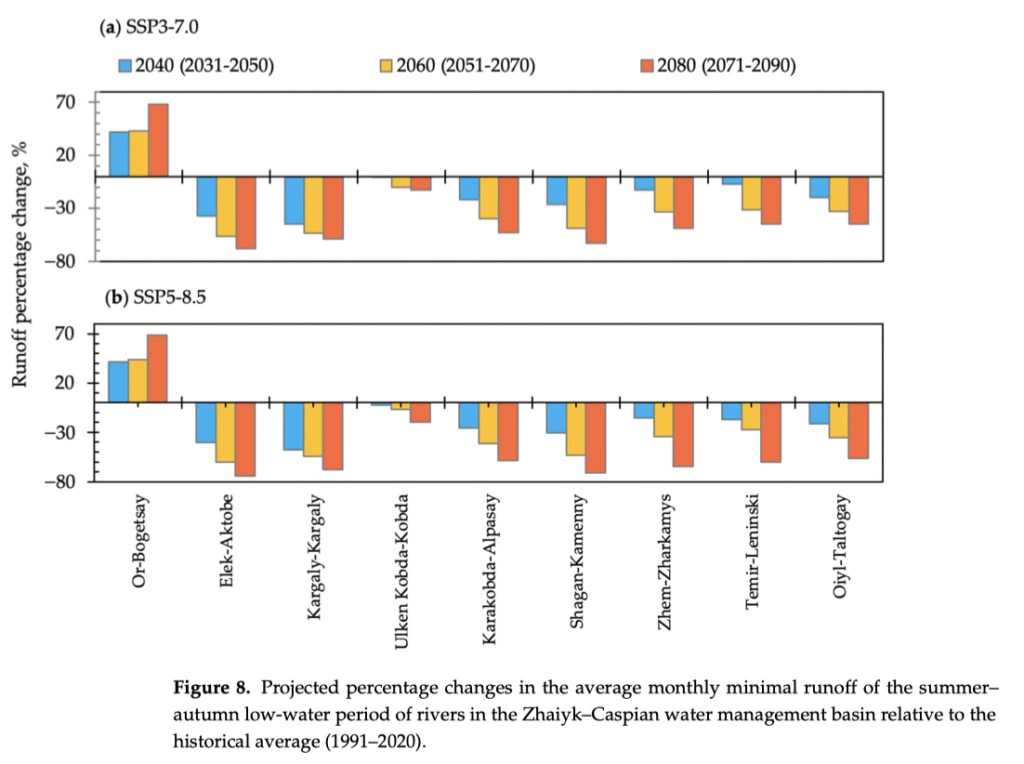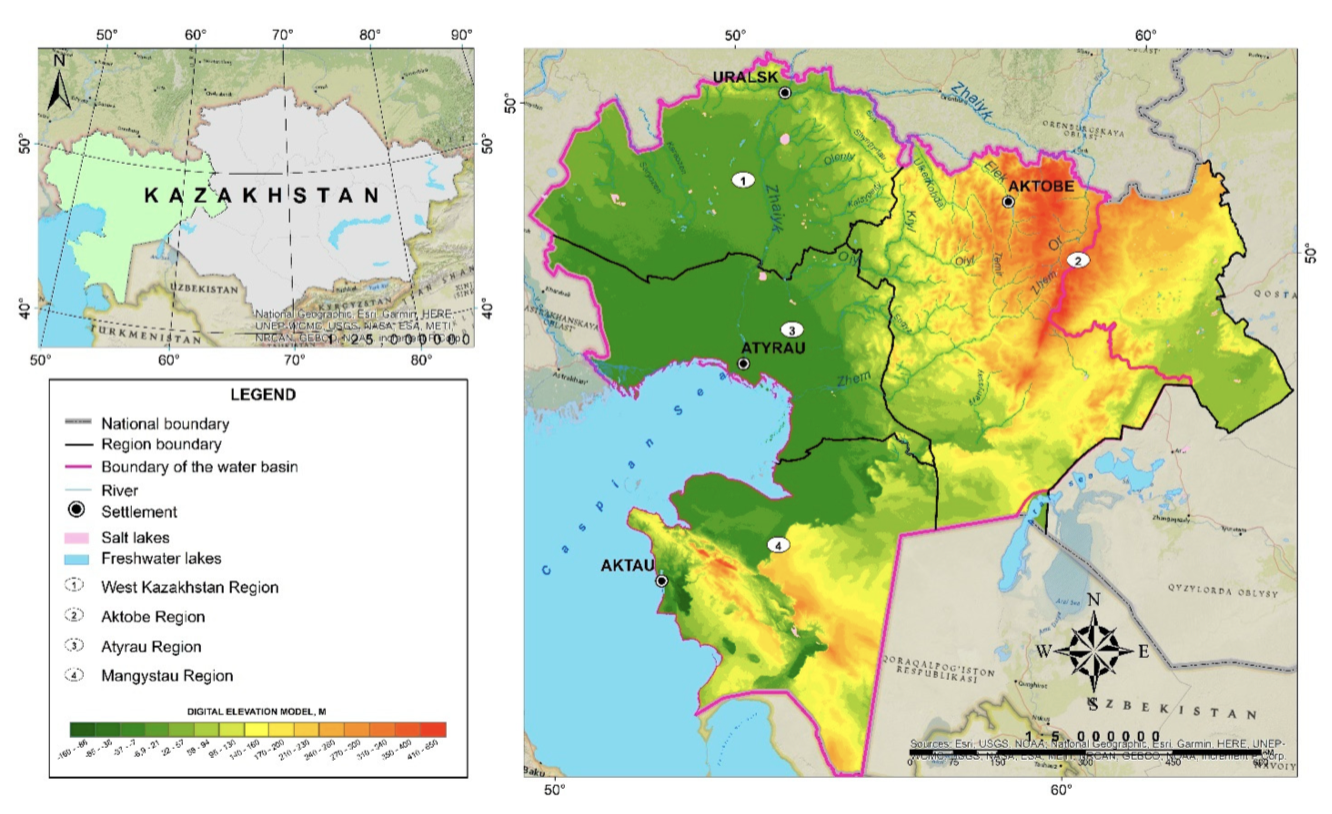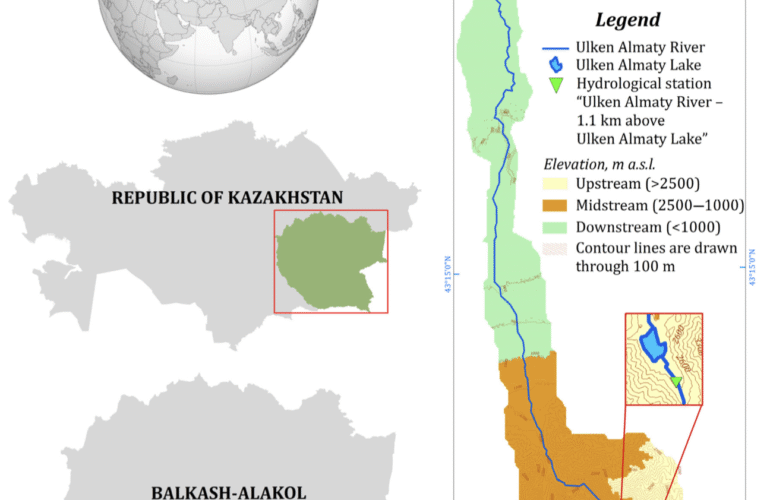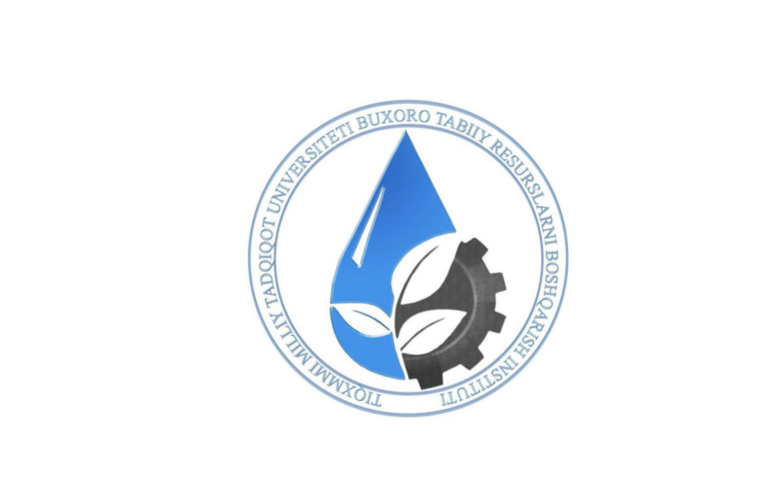We are pleased to announce the publication of a new scientific paper authored by LESLIE project researchers, entitled: “Seasonally Contrasting Sensitivity of Minimal River Runoff to Future Climate Change in Western Kazakhstan: A CMIP6 Scenario Analysis”, published in Water (MDPI), Volume 2025, Issue 17, (2417).
Researchers from the JSC Institute of Geography and Water Security of Almaty, Department of Meteorology and Hydrology, Al-Farabi Kazakh National University, Almaty 050040, Kazakhstan, and Universitat Politècnica de València (UPV) have published this joint research study which presents a scenario-based assessment of the future sensitivity of minimal lowwater runoff to climate change in Western Kazakhstan. An ensemble of global climate models from the Coupled Model Intercomparison Project Phase 6 (CMIP6), combined with dynamically downscaled projections for Central Asia, was applied to estimate minimal monthly runoff during the summer–autumn and winter low-water periods for the rivers of the Zhaiyk–Caspian water management basin.
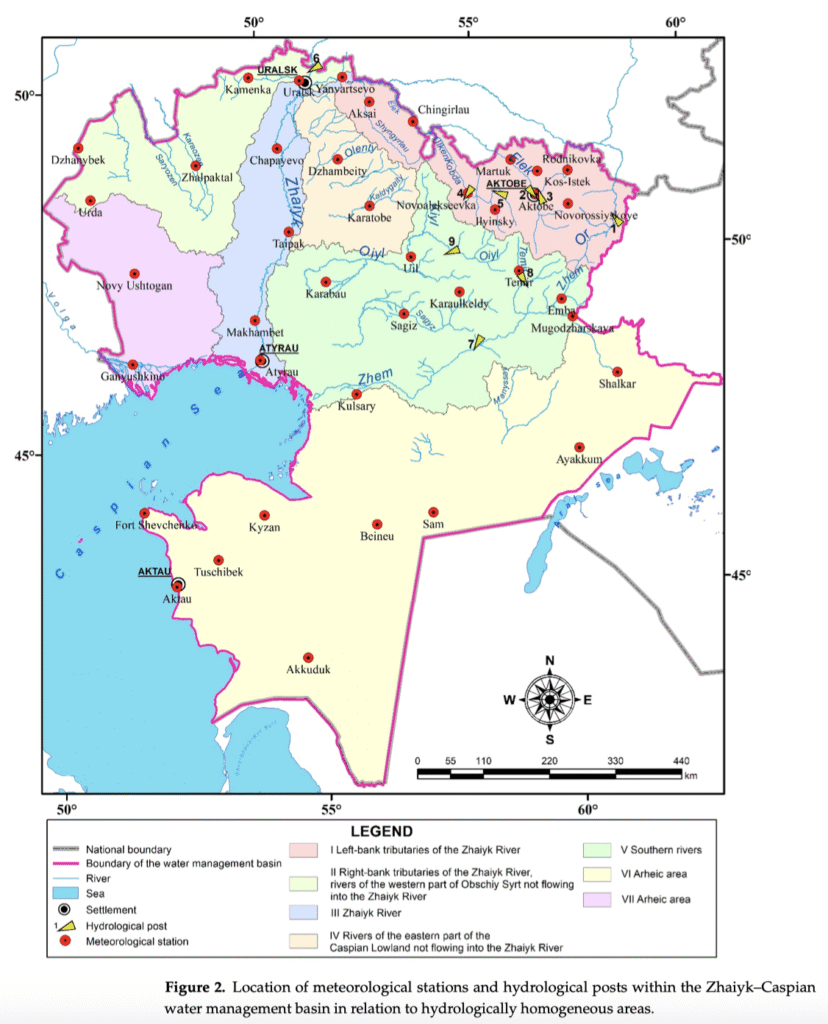 The analysis covers three future time horizons: 2040 (2031–2050), 2060 (2051–2070), and 2080 (2071–2090), under two greenhouse gas concentration scenarios: SSP3-7.0 (moderately high emissions) and SSP5-8.5 (high emissions). The results reveal a pronounced seasonal contrast in the projected hydrological response. During the winter low-water period, a steady increase in minimal runoff is projected for all rivers, with the most significant changes observed for the Or, Zhem, Temir, and Shagan rivers. This increase is primarily driven by higher winter precipitation, increased thaw frequency, and enhanced infiltration recharge. Conversely, despite modest increases in summer–autumn precipitation, minimal runoff during the summer–autumn low-water period is projected to decline significantly, particularly in the southern basins, due to elevated evapotranspiration rates and soil moisture deficits associated with rising air temperatures.
The analysis covers three future time horizons: 2040 (2031–2050), 2060 (2051–2070), and 2080 (2071–2090), under two greenhouse gas concentration scenarios: SSP3-7.0 (moderately high emissions) and SSP5-8.5 (high emissions). The results reveal a pronounced seasonal contrast in the projected hydrological response. During the winter low-water period, a steady increase in minimal runoff is projected for all rivers, with the most significant changes observed for the Or, Zhem, Temir, and Shagan rivers. This increase is primarily driven by higher winter precipitation, increased thaw frequency, and enhanced infiltration recharge. Conversely, despite modest increases in summer–autumn precipitation, minimal runoff during the summer–autumn low-water period is projected to decline significantly, particularly in the southern basins, due to elevated evapotranspiration rates and soil moisture deficits associated with rising air temperatures.
These findings emphasize the importance of developing seasonally differentiated, climate-resilient water management strategies to mitigate low-flow risks and ensure water security under future climate conditions in arid and semi-arid regions.
